France, a land known for its rich history, exquisite cuisine, and world-renowned art, is also home to some of the most picturesque villages you’ll ever lay eyes on. As you traverse the rolling hills and winding roads of this enchanting country, you’ll discover hidden gems that seem to have been plucked straight from a fairytale. These villages, with their cobblestone streets, charming cottages, and breathtaking landscapes, offer a serene escape from the hustle and bustle of modern life.

Imagine stepping back in time as you wander through narrow alleys adorned with vibrant flowers, explore centuries-old churches, and sip a glass of local wine at a quaint bistro. Each village has its own unique story, blending historical richness with natural beauty to create a setting that feels both timeless and extraordinarily intimate. Whether you’re a history buff, a lover of architecture, or simply someone seeking tranquility, these French villages provide a slice of paradise.
In this article, we’ll embark on a journey through 20 of France’s most beautiful villages, each offering its own charm and allure. From the rugged cliffs of the Mediterranean to the lush greenery of the Loire Valley, these villages are sure to captivate your heart. Let’s dive into what makes each of these locales a must-visit destination.
Criteria for Selection
To ensure we highlight the crème de la crème of French villages, we’ve based our selections on several key criteria:
- Historical Significance: Each village has a unique historical background, whether it’s a medieval fortress, a Renaissance treasure, or a site of significant historical events.
- Architectural Beauty: We’ve chosen villages that boast remarkable architecture, from ancient stone buildings to beautifully preserved historical homes.
- Natural Surroundings: The natural landscape surrounding these villages plays a crucial role in their charm, whether it’s rolling hills, vineyards, or pristine lakes.
- Cultural Experience: The local culture, including festivals, traditions, and cuisine, adds depth to the experience of visiting these villages.
- Local Attractions: Each village offers unique attractions, from artisan shops to scenic viewpoints.
The Villages
1. Eze

Nestled on a hilltop overlooking the azure waters of the French Riviera, Eze is a medieval village that exudes a fairy-tale charm. The narrow, winding streets of Eze are lined with quaint boutiques, charming cafes, and beautiful gardens.
- Historical Background: Eze dates back to the 11th century and boasts a rich history, with remnants of its medieval past visible in the village’s architecture.
- Architectural Highlights: The village features cobblestone streets and stone houses, with the iconic Château de la Chèvre d’Or offering panoramic views of the surrounding landscape.
- Natural Attractions: The Jardin Exotique, perched at the top of the village, is a highlight, showcasing a stunning collection of exotic plants and offering breathtaking views of the Mediterranean.
- Local Culture: Eze is known for its artisanal shops and local festivals, including the annual Festival of Eze, which celebrates the village’s cultural heritage.
2. Riquewihr

Located in the Alsace region, Riquewihr is a village straight out of a storybook, with its colorful half-timbered houses and picturesque streets.
- Historical Background: Riquewihr’s history dates back to the 13th century, and its well-preserved medieval architecture reflects its rich past.
- Architectural Highlights: The village’s half-timbered houses, narrow streets, and the impressive Dolder Tower are must-see landmarks.
- Natural Attractions: Riquewihr is situated in the heart of Alsace’s wine country, with vineyards stretching as far as the eye can see.
- Local Culture: The village is known for its wine festivals, including the Fête des Vendanges, which celebrates the grape harvest with local wines and traditional Alsace cuisine.
3. Gordes
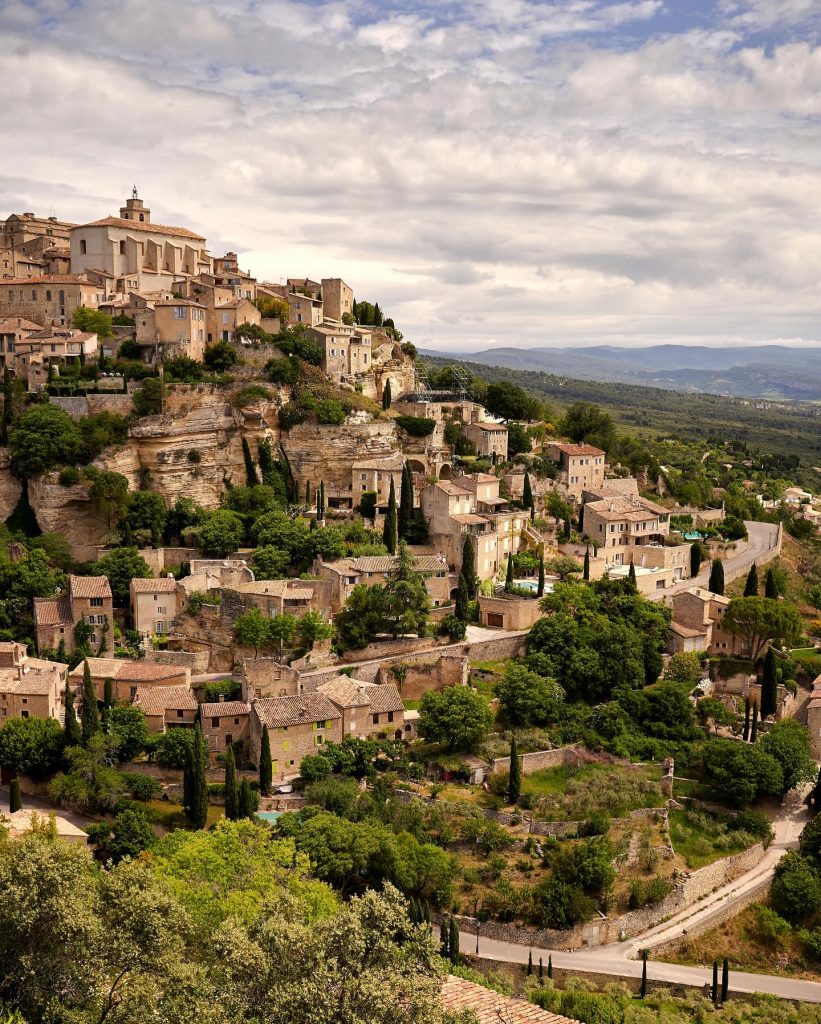
Perched on a hill in the Provence-Alpes-Côte d’Azur region, Gordes is renowned for its stunning views and charming stone houses.
- Historical Background: Gordes has a rich history dating back to the Roman era, with ancient stone structures that reflect its historical significance.
- Architectural Highlights: The village features a mix of Renaissance and medieval architecture, with the Château de Gordes and the Abbaye de Sénanque being notable highlights.
- Natural Attractions: Surrounded by lavender fields and olive groves, Gordes offers spectacular natural scenery, particularly during the lavender bloom in summer.
- Local Culture: The village hosts various festivals, including the annual Festival de Musique en Ventoux, which features classical music performances in a beautiful setting.
4. Saint-Cirq-Lapopie
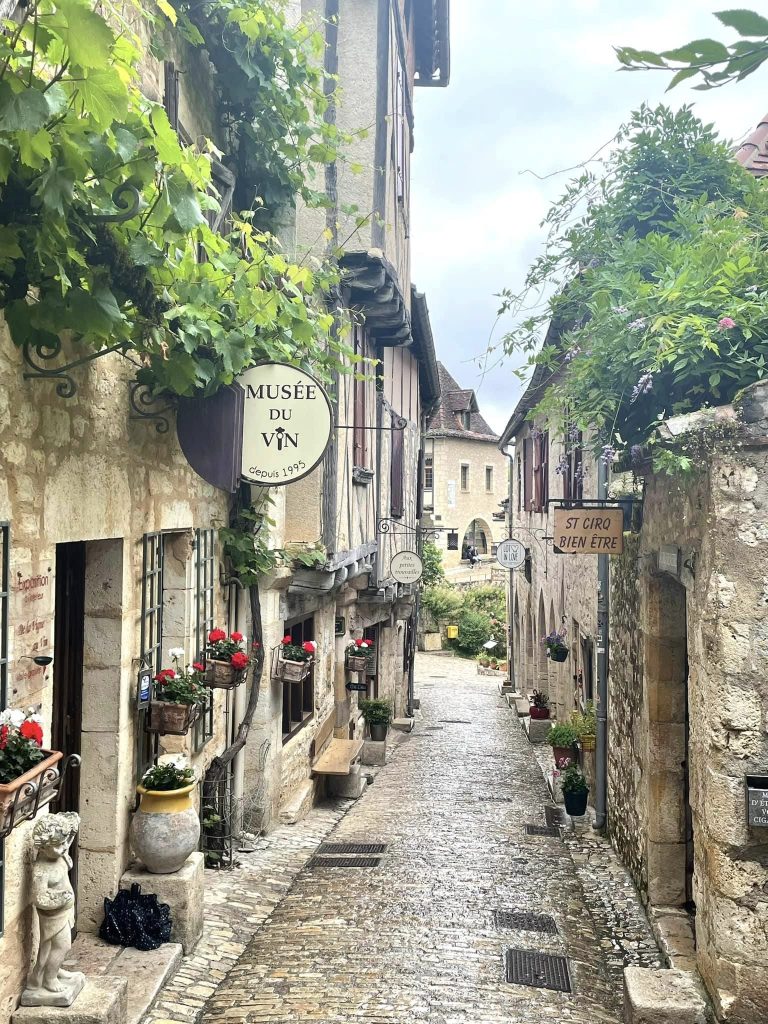
Set above the Lot River in the Occitanie region, Saint-Cirq-Lapopie is known for its dramatic cliffside location and medieval charm.
- Historical Background: The village has a long history, with origins dating back to the 13th century. Its well-preserved medieval architecture and historic buildings make it a living history lesson.
- Architectural Highlights: Saint-Cirq-Lapopie is famous for its stone houses with steep roofs and narrow, winding streets. The village’s church, Saint-Cirq-Lapopie, is a significant historical site.
- Natural Attractions: The village’s location offers stunning views of the Lot River valley and the surrounding natural landscape.
- Local Culture: Saint-Cirq-Lapopie is known for its artisan shops and local festivals, including the annual Festival de Musique, which celebrates the village’s cultural heritage.
5. Eguisheim
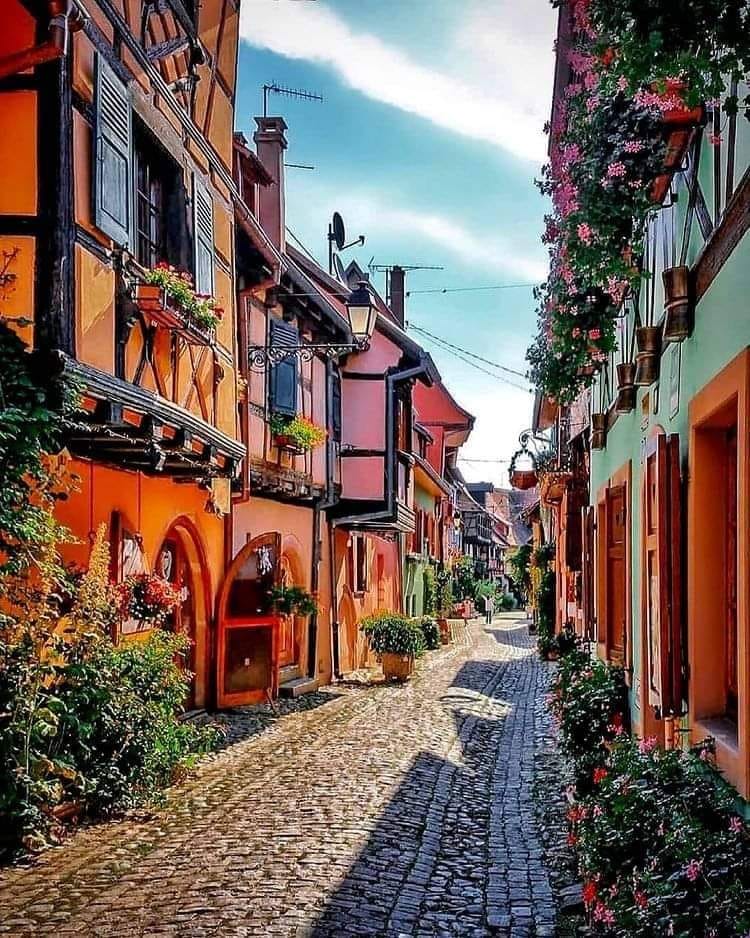
Another gem in the Alsace region, Eguisheim is renowned for its circular layout and colorful half-timbered houses.
- Historical Background: Eguisheim’s history dates back to the 9th century, and the village’s architecture reflects its historical significance.
- Architectural Highlights: The village features a unique circular layout, with half-timbered houses and charming streets. The Château d’Eguisheim is a notable historical site.
- Natural Attractions: Eguisheim is surrounded by vineyards and offers scenic views of the Alsace countryside.
- Local Culture: The village is known for its wine festivals and local cuisine, with traditional Alsace dishes and wines being a highlight.
6. Moustiers-Sainte-Marie

Situated in the Provence-Alpes-Côte d’Azur region, Moustiers-Sainte-Marie is famed for its dramatic location and beautiful pottery.
- Historical Background: The village’s history dates back to the Roman era, with ancient structures and a rich historical heritage.
- Architectural Highlights: Moustiers-Sainte-Marie is known for its picturesque streets, the Notre-Dame de Beauvoir chapel, and its distinctive pottery.
- Natural Attractions: The village is located near the stunning Gorges du Verdon, offering opportunities for outdoor activities and breathtaking views.
- Local Culture: Moustiers-Sainte-Marie is renowned for its pottery, and the village hosts various artisan markets and festivals celebrating local crafts.
7. Conques
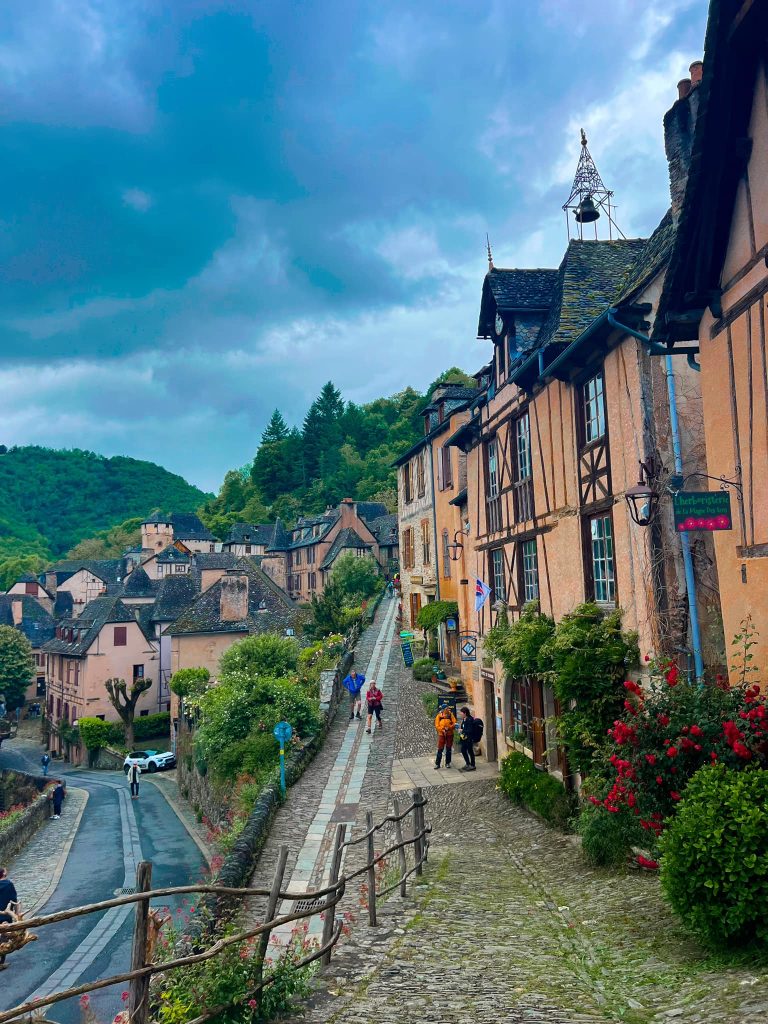
Located in the Aveyron department, Conques is a village renowned for its Romanesque architecture and stunning natural surroundings.
- Historical Background: Conques has a rich history dating back to the Roman era, with its Romanesque abbey being a significant historical site.
- Architectural Highlights: The village is known for its abbey, the Abbaye Sainte-Foy, and its well-preserved medieval architecture.
- Natural Attractions: Conques is surrounded by lush greenery and offers picturesque views of the surrounding countryside.
- Local Culture: The village is known for its traditional festivals and local crafts, including handmade textiles and pottery.
8. Honfleur

A charming port town in Normandy, Honfleur is known for its picturesque harbor and historic buildings.
- Historical Background: Honfleur has a rich maritime history, with its port playing a significant role in the village’s development.
- Architectural Highlights: The village features beautiful half-timbered houses, the Sainte-Catherine Church, and the picturesque Old Harbor.
- Natural Attractions: Honfleur is located along the Seine River, offering scenic views of the river and the surrounding countryside.
- Local Culture: The village is known for its vibrant art scene and local festivals, including the annual Festival de la Saint-Georges.
9. Roussillon
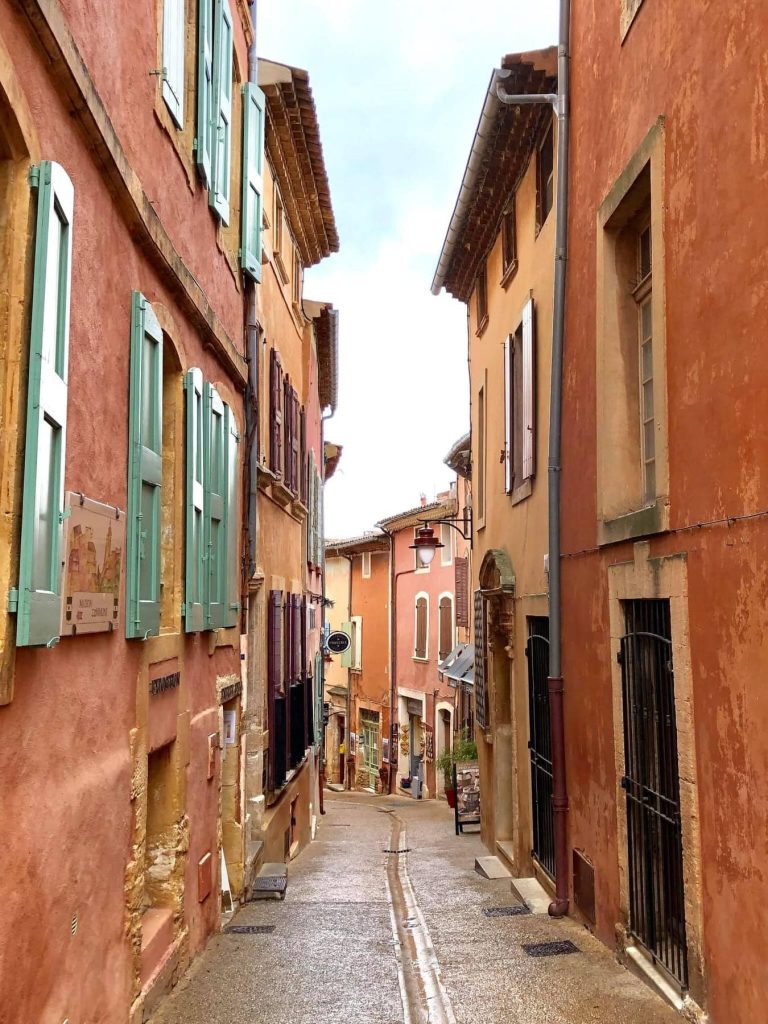
Situated in the Vaucluse department, Roussillon is famous for its stunning ochre cliffs and vibrant colors.
- Historical Background: Roussillon has a rich history, with its ochre production playing a significant role in the village’s development.
- Architectural Highlights: The village features colorful ochre buildings and charming streets, with the old ochre quarries being a notable site.
- Natural Attractions: Roussillon is surrounded by picturesque landscapes, including the stunning ochre cliffs and the nearby Colorado Provençal.
- Local Culture: The village is known for its artisan shops and local festivals, including the annual Festival des Ocres, which celebrates the village’s ochre heritage.
10. L’Isle-sur-la-Sorgue

Known for its charming canals and antique shops, L’Isle-sur-la-Sorgue is a picturesque village in the Vaucluse department.
- Historical Background: The village has a rich history, with its canals and waterways playing a significant role in its development.
- Architectural Highlights: The village features beautiful canals, historic buildings, and charming streets. The Old Mill and the Church of Notre-Dame-des-Anges are notable landmarks.
- Natural Attractions: L’Isle-sur-la-Sorgue is located along the Sorgue River, offering scenic views and opportunities for outdoor activities.
- Local Culture: The village is known for its antique shops, local markets, and festivals, including the annual Antique Fair, which attracts visitors from around the world.
11. Mirmande

A medieval village in the Drôme department, Mirmande is known for its charming streets and historical buildings.
- Historical Background: Mirmande has a rich history, with its medieval architecture and historical buildings reflecting its past.
- Architectural Highlights: The village features well-preserved medieval streets, stone houses, and the Church of Saint-Sauveur.
- Natural Attractions: Mirmande is surrounded by picturesque landscapes, including rolling hills and scenic views of the Drôme countryside.
- Local Culture: The village is known for its local crafts, including pottery and textiles, and hosts various festivals celebrating its cultural heritage.
12. La Roque-Gageac
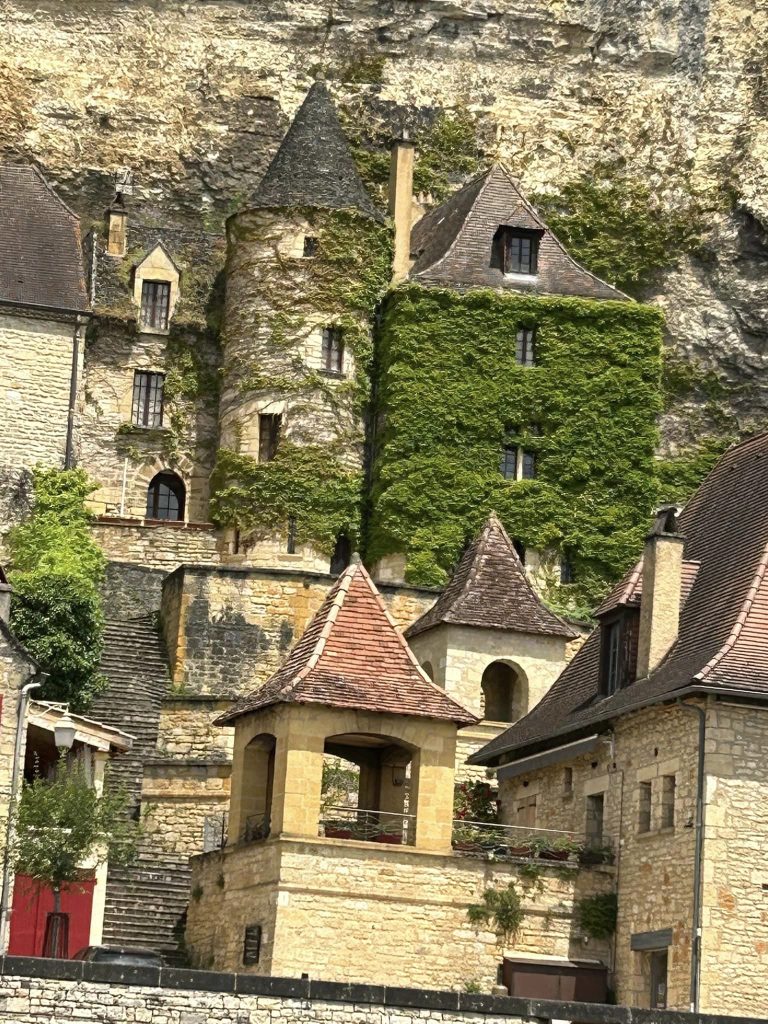
Set along the Dordogne River in the Périgord region, La Roque-Gageac is renowned for its stunning cliffside location and beautiful architecture.
- Historical Background: The village has a rich history, with its cliffside location and historical buildings reflecting its past.
- Architectural Highlights: La Roque-Gageac features charming stone houses, historic buildings, and the beautiful Church of Saint-Sulpice.
- Natural Attractions: The village is located along the Dordogne River, offering scenic views and opportunities for outdoor activities, including boat rides and hiking.
- Local Culture: The village is known for its local markets, artisan shops, and festivals, including the annual Festival de la Dordogne, which celebrates the region’s cultural heritage.
13. Collonges-la-Rouge
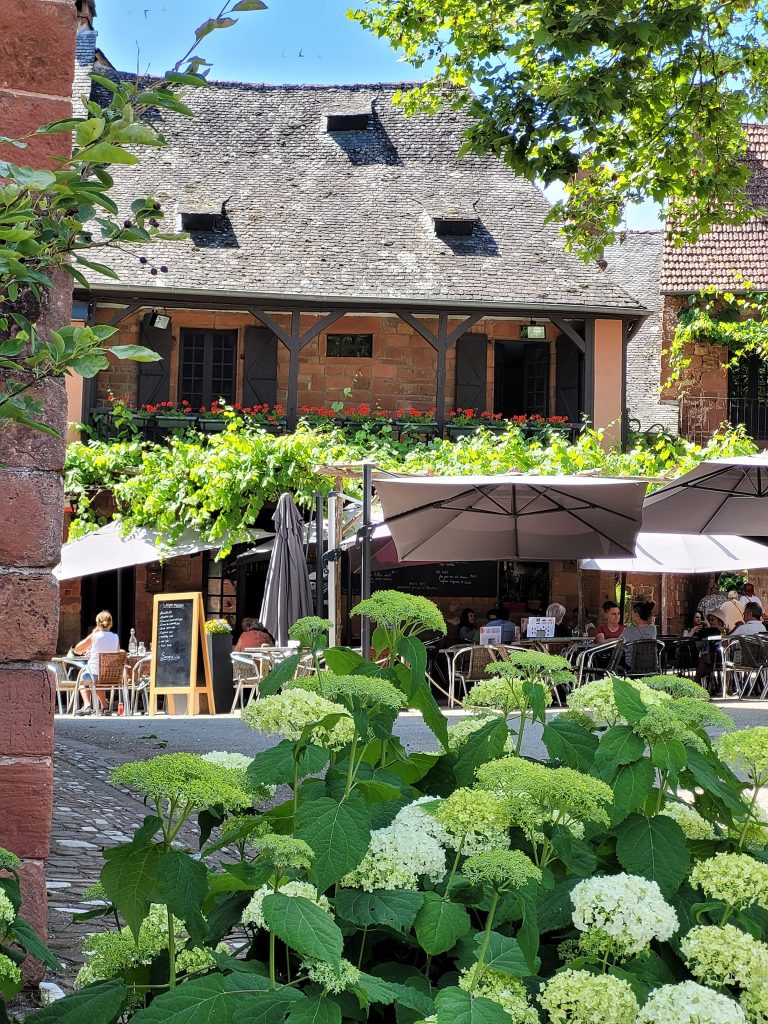
Located in the Corrèze department, Collonges-la-Rouge is famous for its red sandstone buildings and picturesque streets.
- Historical Background: The village has a rich history, with its red sandstone buildings and historical architecture reflecting its past.
- Architectural Highlights: Collonges-la-Rouge is known for its unique red sandstone buildings, charming streets, and the beautiful Church of Saint-Pierre.
- Natural Attractions: The village is surrounded by picturesque landscapes, including rolling hills and scenic views of the Corrèze countryside.
- Local Culture: The village is known for its local crafts, including handmade textiles and pottery, and hosts various festivals celebrating its cultural heritage.
14. Salers
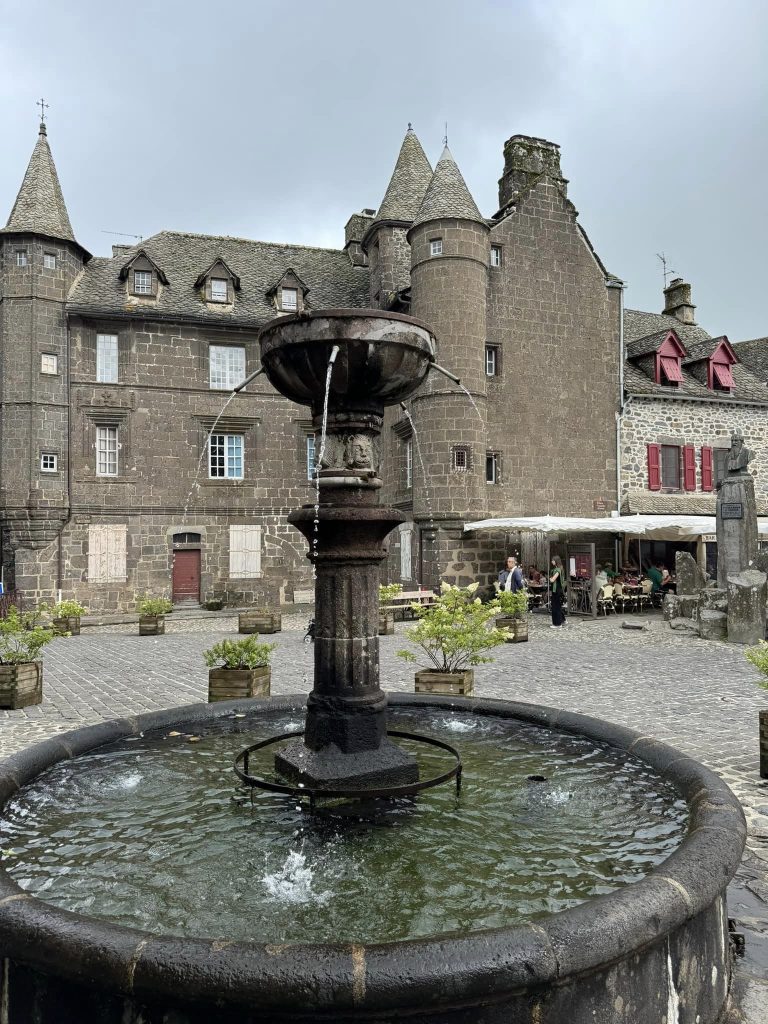
Situated in the Cantal department, Salers is known for its well-preserved medieval architecture and charming streets.
- Historical Background: Salers has a rich history, with its medieval architecture and historical buildings reflecting its past.
- Architectural Highlights: The village features well-preserved medieval streets, stone houses, and the beautiful Church of Saint-Matthieu.
- Natural Attractions: Salers is surrounded by picturesque landscapes, including rolling hills and scenic views of the Cantal countryside.
- Local Culture: The village is known for its local cheeses and artisan crafts, and hosts various festivals celebrating its cultural heritage.
15. Rochefort-en-Terre
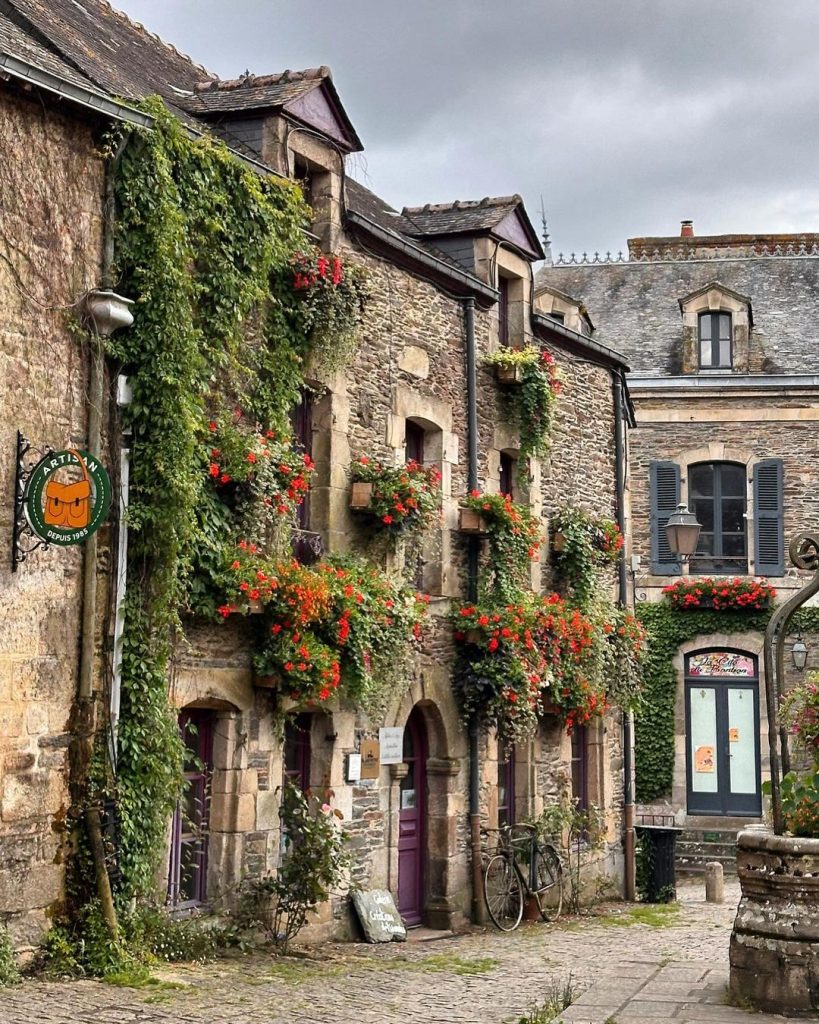
A picturesque village in the Morbihan department, Rochefort-en-Terre is renowned for its charming streets and beautiful architecture.
- Historical Background: The village has a rich history, with its medieval architecture and historical buildings reflecting its past.
- Architectural Highlights: Rochefort-en-Terre features well-preserved medieval streets, charming houses, and the beautiful Church of Saint-Michel.
- Natural Attractions: The village is surrounded by picturesque landscapes, including rolling hills and scenic views of the Morbihan countryside.
- Local Culture: The village is known for its local crafts, including handmade textiles and pottery, and hosts various festivals celebrating its cultural heritage.
16. Châteauneuf-du-Pape

Located in the Vaucluse department, Châteauneuf-du-Pape is famous for its wine and historic architecture.
- Historical Background: The village has a rich history, with its medieval architecture and historical buildings reflecting its past.
- Architectural Highlights: Châteauneuf-du-Pape features beautiful historic buildings, including the Château des Papes and the Church of Saint-Dominique.
- Natural Attractions: The village is located in the heart of the Rhône wine region, offering scenic views and opportunities for wine tasting.
- Local Culture: The village is known for its wine festivals, local markets, and traditional cuisine, including local wines and dishes.
17. Montargis

A charming town in the Loiret department, Montargis is known for its picturesque canals and historic architecture.
- Historical Background: Montargis has a rich history, with its canals and historical buildings reflecting its past.
- Architectural Highlights: The town features beautiful canals, historic buildings, and the impressive Château de Montargis.
- Natural Attractions: Montargis is surrounded by picturesque landscapes, including scenic views of the Loiret countryside and opportunities for outdoor activities.
- Local Culture: The town is known for its local markets, artisan shops, and festivals celebrating its cultural heritage.
18. Beaune

Located in the Côte-d’Or department, Beaune is famous for its wine and historic architecture.
- Historical Background: Beaune has a rich history, with its medieval architecture and historical buildings reflecting its past.
- Architectural Highlights: The town features beautiful historic buildings, including the Hôtel-Dieu and the Church of Notre-Dame.
- Natural Attractions: Beaune is located in the heart of the Burgundy wine region, offering scenic views and opportunities for wine tasting.
- Local Culture: The town is known for its wine festivals, local markets, and traditional cuisine, including local wines and dishes.
19. Vézelay
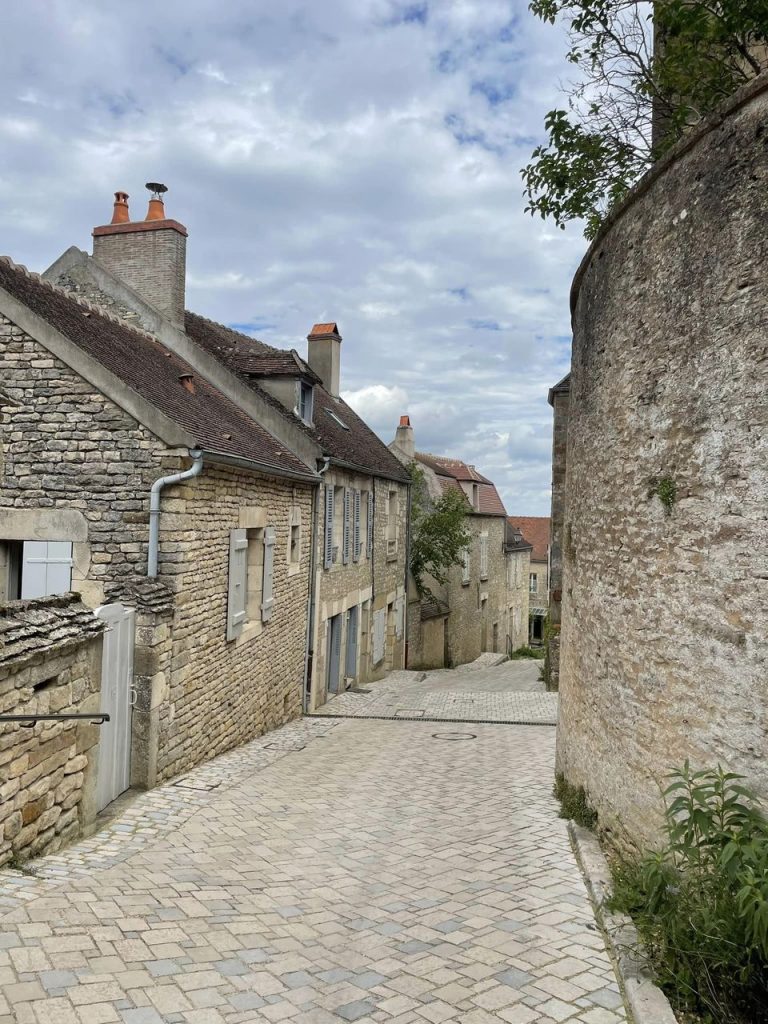
A historic town in the Yonne department, Vézelay is renowned for its stunning basilica and medieval architecture.
- Historical Background: Vézelay has a rich history, with its medieval architecture and historical buildings reflecting its past.
- Architectural Highlights: The town features the impressive Basilica of Saint-Mary and well-preserved medieval streets.
- Natural Attractions: Vézelay is surrounded by picturesque landscapes, including rolling hills and scenic views of the Yonne countryside.
- Local Culture: The town is known for its local crafts, including handmade textiles and pottery, and hosts various festivals celebrating its cultural heritage.
20. Troyes

Located in the Aube department, Troyes is famous for its medieval architecture and charming streets.
- Historical Background: Troyes has a rich history, with its medieval architecture and historical buildings reflecting its past.
- Architectural Highlights: The town features beautiful medieval streets, historic buildings, and the impressive Church of Saint-Jean-au-Marche.
- Natural Attractions: Troyes is surrounded by picturesque landscapes, including scenic views of the Aube countryside and opportunities for outdoor activities.
- Local Culture: The town is known for its local markets, artisan shops, and festivals celebrating its cultural heritage.
Unique Features of French Villages
Architectural Styles
French villages are renowned for their diverse architectural styles, each reflecting the region’s history and cultural influences.
- Medieval Villages: Many villages, like Saint-Cirq-Lapopie and Eze, boast medieval architecture, characterized by stone houses, narrow streets, and historic fortifications.
- Renaissance Influences: Villages such as Gordes showcase Renaissance architecture, with elegant stone buildings and intricate detailing.
- Half-Timbered Houses: In regions like Alsace, villages like Riquewihr and Eguisheim feature charming half-timbered houses, adding a distinctive character to the streetscape.
Local Cuisine and Markets
Local cuisine and markets are integral to the experience of visiting French villages.
- Regional Specialties: Each village offers unique culinary delights, from the wines of Châteauneuf-du-Pape to the cheeses of Salers.
- Markets: Villages often host local markets where you can sample regional products, such as fresh produce, artisan cheeses, and handmade crafts.
Cultural and Artistic Heritage
French villages are rich in cultural and artistic heritage, with many hosting local festivals and events.
- Artisan Shops: Many villages have local artisans creating everything from pottery to textiles, reflecting the region’s traditions.
- Festivals: Villages often host festivals celebrating local culture, such as the Festival des Ocres in Roussillon or the Fête des Vendanges in Riquewihr.
Travel Tips
Best Times to Visit
- Spring and Summer: Ideal for enjoying outdoor activities and experiencing local festivals.
- Autumn: Great for wine harvests and fall foliage.
- Winter: Some villages may offer festive Christmas markets and seasonal charm.
Accommodation Options
- Charming Inns: Opt for local inns or bed-and-breakfasts to experience authentic hospitality.
- Luxury Stays: For a more upscale experience, consider boutique hotels or luxury accommodations.
Transportation
- Car Rental: Renting a car is often the best way to explore remote villages.
- Public Transport: Check local train and bus services for access to larger towns near the villages.
Local Etiquette
- Respect Traditions: Be mindful of local customs and traditions.
- Learn Basic French Phrases: Basic knowledge of French can enhance your experience and interactions with locals.
Conclusion
France’s villages are a treasure trove of beauty, history, and culture, each offering a unique glimpse into the country’s rich heritage. From the dramatic cliffside settings of La Roque-Gageac to the vibrant hues of Roussillon’s ochre cliffs, these villages capture the essence of French charm and elegance.
Exploring these villages provides not only a visual feast but also a deep dive into local traditions, culinary delights, and historical marvels. As you wander through their picturesque streets, take the time to savor the sights, sounds, and tastes that make each village special. Whether you’re planning a trip or simply dreaming of a French getaway, these villages promise an unforgettable experience that will stay with you long after you’ve left their charming confines.
So pack your bags, grab your camera, and get ready to embark on a journey through some of the most beautiful villages France has to offer. Your adventure awaits!

